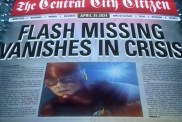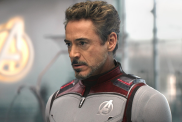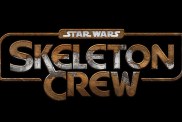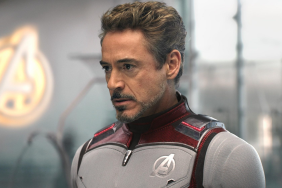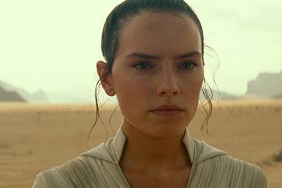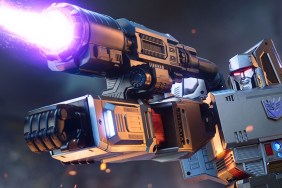
After two tours of duty chronicling the war between the Autobots and the Decepticons, screenwriters Alex Kurtzman and Roberto Orci took some time to reflect on their experiences, just in time for the Blu-ray and DVD release of Transformers: Revenge of the Fallen. SuperHeroHype.com transformed into a digital recorder to capture their thoughts on making the mythology, the moviegoers’ response and, of course, Megan Fox.
On the polarized response to “Transformers: Revenge of the Fallen,” with part of the audience loving it and part of the audience hating it:
Roberto Orci: Yeah, I expected it to be divisive. Sequels now are easy targets, number one; it was undertaken under the pressure of a writer’s strike, which makes us targets; it was longer, which was a debate. It was bigger, louder, and longer than the first one. There was controversy on the first one as well.
Alex Kurtzman: It’s very hard to gauge what is going to work for people, and what’s not going to work for people. Because what one person says is way too long, my 12-year-old cousin says “I wish it was longer.” That just totally confuses me. I think at the end of the day, Michael [Bay] has his rhythm and his pace, and he ends up determining how long he wants to make the movie.
On the advantages of writing for the “Transformers” pre-established cast:
Kurtzman: Knowing them and knowing their voices – It’s huge! It’s huge, and a great thing to have. We’ve made three movies with Shia, and he’s an incredibly fun actor to write for in that he can do dialogue at any pace. Not every actor can do that. He really can run through things. Shia has a really good… I’ll call it a “cheese alarm.” If he thinks something is cheesy – which I think really means inauthentic – he won’t want to do it. So when we are writing, we are often thinking of kind of knowing where his instincts tend to go, in terms of scene work and what he likes to do. For him, he cannot act a scene unless he feels the truth of it somehow. It has to be truthful. It can be funny, it can be broad, it can be lots of things – he can be talking to a giant robot, but there has to be some truth in it. If there isn’t then he can’t do it, so that’s very helpful in terms of knowing what he’s going to be looking for in a scene.
On the effects of economics on film content, and balancing studio requests and demands with storytelling needs:
Orci: I think it’s affected the content in a global way. The movies that are being selected to be made tend to be, right now, this very escapist, fun, big, forget-your-life, kind of stuff. We’re not seeing a lot of adult dramas. That’s why we’re writing these. The minute you are writing “Transformers” I think the economy comes in. But they want to be more conscientious budget-wise. Yeah, they do want more robots, but for a price. You have to make sure you do it at the right level.
Kurtzman: What that means is that your character story, hopefully, is strong enough to sustain the affordability factor. You won’t be able to have a robot in every shot.
On having more freedom to fully invent the filmic mythology of “Transformers” over re-imagining elements of a more familiar and established franchise like “Star Trek”:
Kurtzman: I think in the case of “Transformers” we didn’t see it as re-imagining because there was no movie. It was just a cartoon. That was actually imagining like “What is this going to look like, because the cartoon is not… the standards of storytelling were so different when the cartoon was first invented. It was a cartoon. They literally didn’t have the ability to do the live action version. So figuring out what the balance of robot to human time was going to be, what the axis point for the audience was going to be, who was the character they were going to follow into that world, why, what’s that story? Finding the story of a boy and his car felt like, again, we didn’t really take that off of anything. It was just like “Okay, what are the movies that this wants to feel like? Well, I think it kind of wants to feel like the movies we grew up on in the Amblin’ vein. It felt like that led us to boy and his car.”
Orci: In the case of Bumblebee, making him not a [Volkswagen] Bug but a muscle car, I think led us to making him more of an action character than was in the original series, where he was sort of the child and the youngest one. He hung out mostly with the kids. He is both closest to Shia, but also one of them – he’s one of the soldiers. You find out he lost his voice as a result of war. It does change that a little bit, but so many things go into figuring out the character. You write it one way, then you get to see what the car looks like, then you try different voice actors, and different voice actors will bring different things to it that you adjust to.
On working with the world’s most-blogged-about young movie actress:
Kurtzman: I think Megan was really interesting in the first movie because she was very surprising. There is a sweetness to her and that was what I think made the relationship dynamic work really well. I think that for us, knowing that it was going to be about her character dealing with whether or not the boyfriend that she was leaving, who was going off to school and leaving her behind, whether or not the relationship was going to survive – thinking about how that relationship was going to play out over the course of the movie I think gave us what we needed. We talked to Megan a lot in preproduction with that, we would have a couple of days where we would all sit in a room and talk about the script, go over scenes, and riff stuff out. I think that is where the actor’s voices really become great, because you’ve been living in your head for so long and then you bring it to them. Then you start rewriting once they are getting their hands on it.
On how working with digital creations can also be a boon to screenwriters during the filmmaking process:
Orci: Because you are able to animate the robots after the fact you are playing with the dialogue up until the last minute. With “Star Trek” once it is shot, it’s shot. So [in “Transformers”] scenes can be created after the fact, scenes that weren’t in the original script at all. You get the opportunity to make stuff up after the fact, which was the cool thing about “Transformers.”
Transformers: Revenge of the Fallen hits Blu-ray and DVD on Tuesday, October 20th.
Source: Scott Huver

